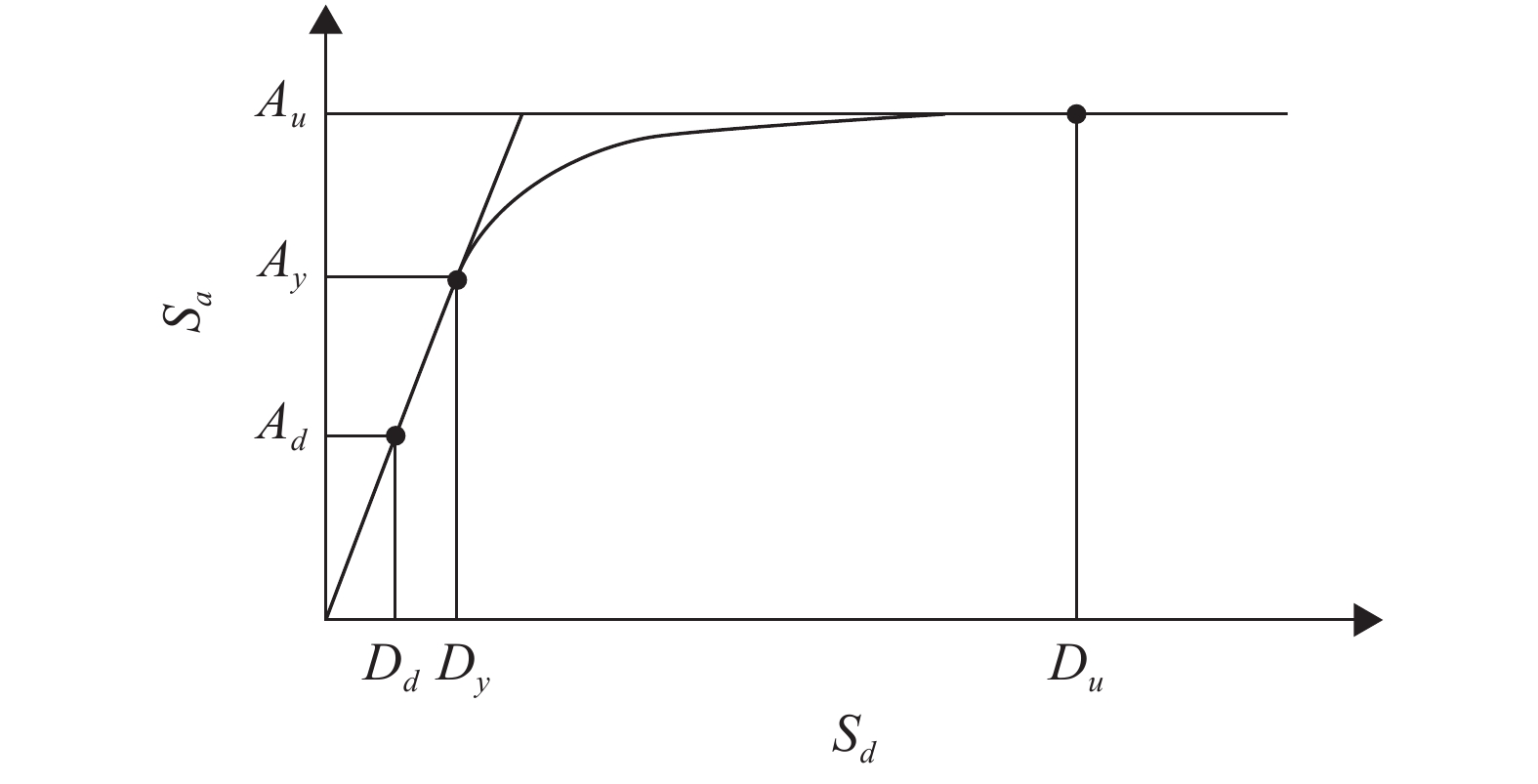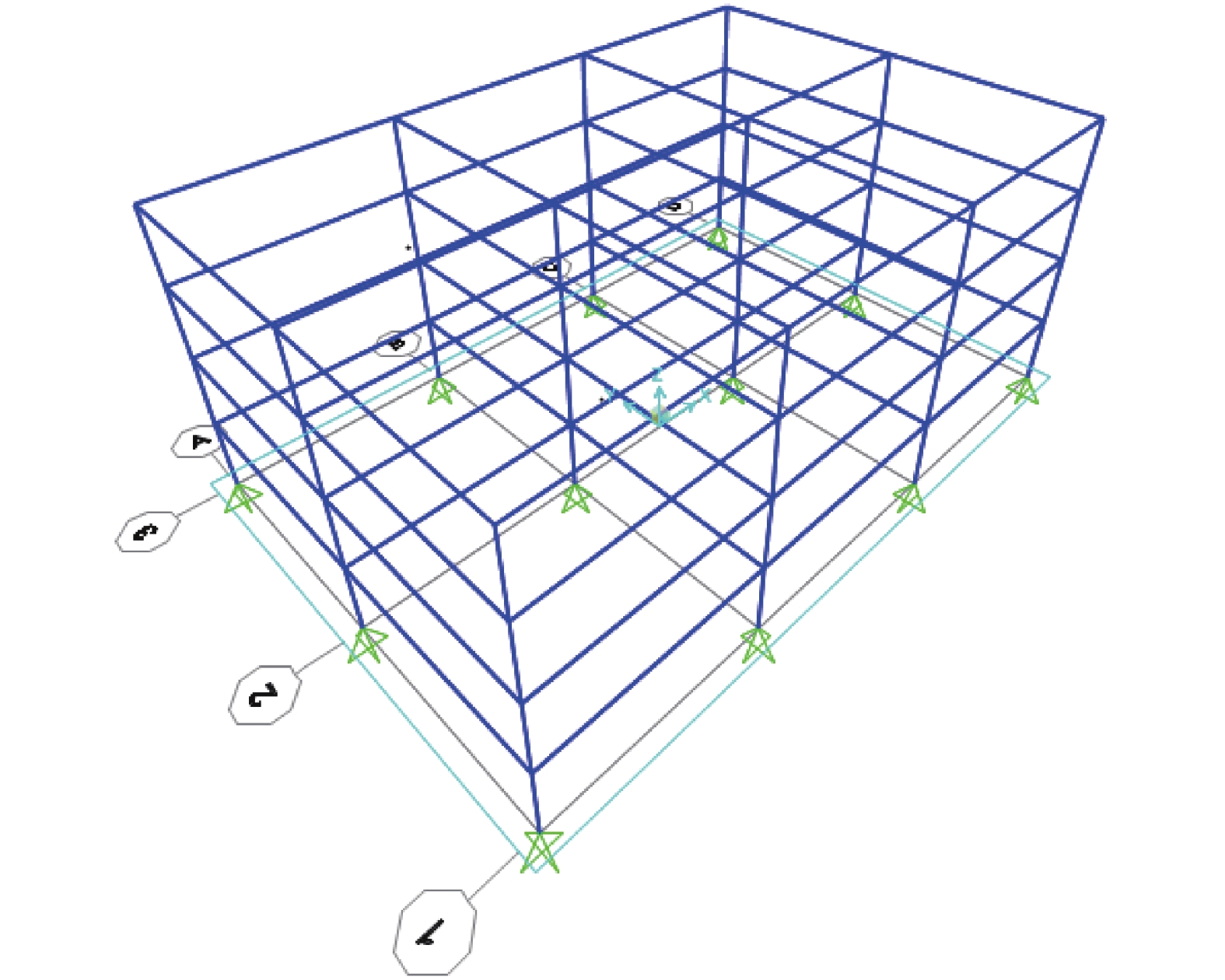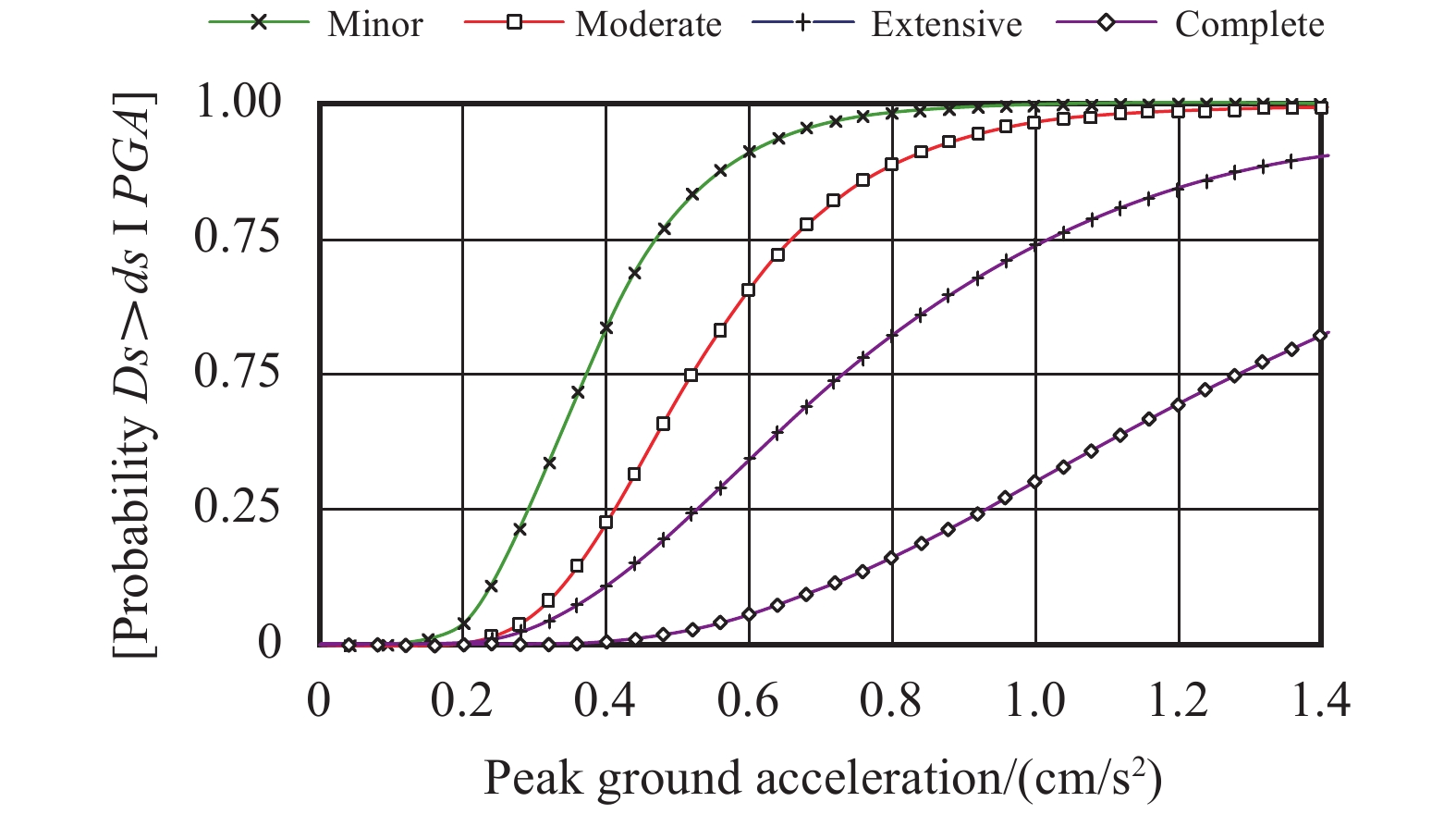Earthquake Risk, Loss Assessment and Insurance Options —A Case Study of Airport Terminals
-
摘要: 从机场航站楼系统在地震作用下的结构响应和破坏特征入手,介绍了HAZUS灾害评估与直接经济损失的框架和理论模型;以某机场航站楼遭受地震烈度为8的地震为例,定量计算地震的潜在损伤概率,再根据损伤概率计算其直接经济损失,并给出财产损失保险建议,研究结果表明,当航站楼处于烈度为8的地震风险时,该建筑的各个系统处于不同的损伤概率,其中处于轻微损伤的系统较多,其概率高达33%,直接经济损失约为1531.404 万元;最后对其进行保险方案探究。该研究可以为机场航站楼防灾备灾的风险决策提供参考依据。Abstract: Based on the structural response and damage characteristics of airport terminal system under earthquake, the framework and theoretical model of HAZUS disaster assessment and direct economic loss are introduced. Taking an airport terminal subjected to an earthquake with earthquake intensity of 8 as an example, the potential damage probability of the earthquake is quantitatively calculated, and the direct economic losses are calculated according to the damage probability, and the property damage insurance advices are given. The results show that when the terminal is at the risk of the intensity of 8, each system of the building is in different damage probability, among which there are more systems in slight damage, the probability is as high as 33%, and the direct economic loss is about 15.3404 million Yuan. Finally, the insurance scheme is explored. This study can provide a reference for the risk decision of disaster prevention and preparedness of airport terminal buildings.
-
-
表 1 基准费率表
% 钢混结构 砖混结构 其他 低危地区 0.05~0.10 0.10~0.20 0.20~0.30 中危地区 0.10~0.20 0.20~0.30 0.30~0.40 高危地区 0.20~0.30 0.30~0.40 0.40~0.50 表 2 机场航站楼脆弱性曲线Sa,ds及βds
类型 破坏程度 中位值 标准差 航站楼(PGA) 轻微 0.14 0.64 中等 0.26 0.64 严重 0.62 0.64 完全 1.43 0.64 表 3 航站楼损伤率DRi取值
损伤状态 最佳估计损伤率 损伤率浮动范围 轻微 0.10 0.01~0.15 中等 0.40 0.15~0.4 严重 0.80 0.4~0.8 完全损坏 1.00 0.8~1.0 表 4 场地因子取值
场地 有利地段 不利地段 危险地段 φm 0~0.05 0.05~0.25 0.25~0.30 表 5 用途因子取值
用途 民宅 办公、商用 厂房、仓库 k 0~0.10 0.10~0.40 0.40~0.60 表 6 建筑年代浮动系数
建筑年代 1989年以前 1989—2001年 2002年以后 修正系数 1.05 1.00 0.95 表 7 建筑层数浮动系数
层数 单层 2~7层 7层以上 修正系数 0.95 1.00 1.05 表 8 建筑抗震设计浮动系数
抗震系数 有抗震设计 无抗震设计 不详 修正系数 0.95 1.15 1.1 -
[1] 杜文. 巨灾型发事件应急救援体系研究[D]. 焦作: 河南理工大学, 2012. [2] Sarkani S, Lutes L D, Jin S, et al. Stochastic analysis of seismic structural response with soil-structure interaction[J]. Structural Engineering and Mechanics, 1999, 8(1): 53-72. doi: 10.12989/sem.1999.8.1.053
[3] Ikeda K, Yokoyama M, Tomita K, et al. Vulnerability of the gradually elongated nerve to compression injury[J]. Hand Surgery, 2001, 6(1): 29-35. doi: 10.1142/S0218810401000400
[4] Remo J W F, Pinter N. HAZUS-MH earthquake modeling in the central USA[J]. Natural Hazards, 2012, 63(2): 1055-1081. doi: 10.1007/s11069-012-0206-5
[5] Ellinwood B R. Earthquake risk assessment of building structures[J]. Reliability Engineering and System Safety, 2001, 74(3): 251-262. doi: 10.1016/S0951-8320(01)00105-3
[6] Chong Xu, Xiwei Xu, Yuan Hsi Lee, et al. The 2010 Yushu earthquake triggered landslide hazard mapping using GIS and weight of evidence modeling[J]. Environmental Earth Sciences, 2012, 66(6).
[7] 杨玉成. 城市现有建筑物震害预测与防御对策系统的研究与应用[J]. 中国科学基金, 1993(2): 111-114. [8] 高小旺, 钟树益. 地震作用下多层剪切型结构弹塑性位移反应的实用计算方法[J]. 土木工程学报, 1984, 25(3): 79-87. [9] 成小平, 陈秀发, 彭涛, 等. 四川综合地震数据库接口的设计与实现[J]. 计算机应用研究, 1989, 30(3): 58-63. [10] Liu J B. The effect of local irregular topography on seismic ground motion[J]. Acta Seismologica Sinica, 1996, 9(2): 309-315. doi: 10.1007/BF02651075
[11] 黄龙生, 姜淑珍. 公路桥区域性震害预测[J]. 地震工程与工程振动, 1995, 7(4): 113-117. [12] 赵成刚, 冯启民, 王前信, 等. 地下管线的模糊随机动力可靠性分析[J]. 土木工程学报, 1992, 25(6): 66-72. [13] 张剑寒, 刘志杰, 王后裕. HAZUS 99建筑震害预测方法中能力谱法的应用[J]. 建筑结构, 2011, 41(S1): 245-248. [14] 吕大刚, 于晓辉. 基于地震易损性解析函数的概率地震风险理论研究[J]. 建筑结构学报, 2013, 34(10): 41-48. [15] Felsenstein D, Elbaum E, Levi T, et al. Post-processing HAZUS earthquake damage and loss assessments for individual buildings[J]. Natural Hazards, 2021, 105(1): 21-45. doi: 10.1007/s11069-020-04293-1
[16] 于晓辉, 吕大刚. HAZUS相容的钢筋混凝土框架结构地震易损性分析[J]. 工程力学, 2016, 33(3): 152-160. [17] 李永梅, 李玉占, 杨博颜. 基于性能的钢框架结构地震易损性分析[J]. 工程抗震与加固改造, 2017, 39(4): 55-59, 46. [18] 杨妍, 李霖. 中外两种地震灾害经济损失评估模型比较研究[J]. 国际地震动态, 2016, 7(7): 27-31. doi: 10.3969/j.issn.0235-4975.2016.07.009 [19] 郑山锁, 相泽辉, 郑捷, 等. 我国建筑物地震保险制度及保险费率厘定研究[J]. 灾害学, 2016, 31(3): 1-7, 19. doi: 10.3969/j.issn.1000-811X.2016.03.001 [20] 邬亲敏, 冯启民, 莫善军. 建筑物地震损失风险与保险费用的确定方法[J]. 地震工程与工程振动, 2004, 24(1): 180-185. doi: 10.3969/j.issn.1000-1301.2004.01.029 [21] 左哲. 基于地震动参数的大型储罐潜在危险性评估方法研究[J]. 中国安全生产科学技术, 2012, 8(5): 41-46. [22] Dorri R, Zadeh A M, Babadi M. New design for creating safe places to reduce earthquake loss and the best way to rescue and relief people[J]. Geological Journal, 2018, 8(9): 913-924.
[23] Jaiswal K, Bausch D, Rozelle J, et al. Hazus® estimated annualized earthquake losses for the United States[R]. Boston: Federal Emergency Management Agency, 2017.
[24] 潘晓红, 贾铁飞, 温家洪, 等. 多灾害损失评估模型与应用述评[J]. 防灾科技学院学报, 2009, 11(2): 77-82. doi: 10.3969/j.issn.1673-8047.2009.02.017 [25] GB 50011—2010, 建筑物抗震设计规范(附条文说明)(2016年版)[S]. 北京: 中国建筑工业出版社, 2010.





 下载:
下载:




